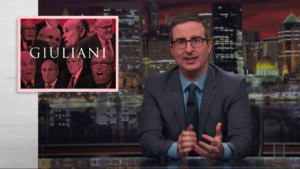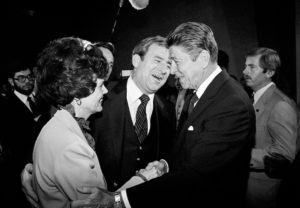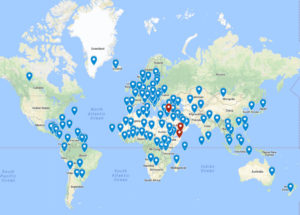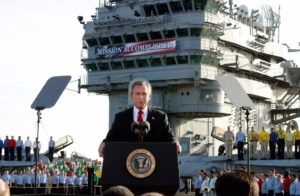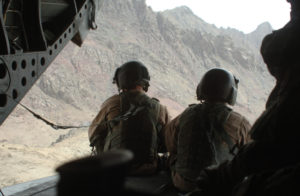Important Anti-War Films That Reveal the Uncensored History of the United States
The U.S. is addicted to war. Stopping this horrible situation is up to the American people. The way we do this is by getting informed. These documentaries can help.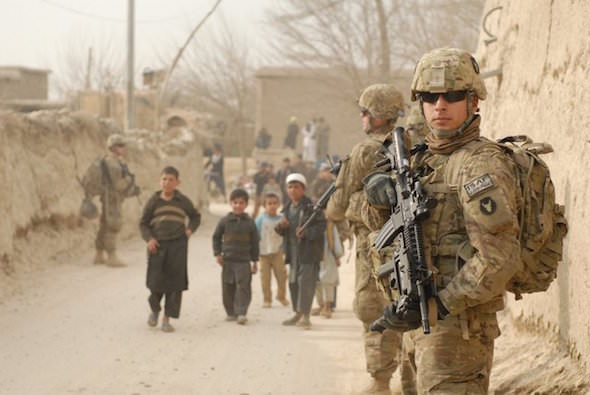
U.S. Army National Guard soldiers patrol villages in the Bagram Security Zone of Afghanistan in 2011. (U.S. Army)
The following list of anti-war films spells out the true nature of U.S. foreign policy. These films offer proof that the United States has killed as many as 20 million or more innocent people since the end of World War II. Many more millions have been injured, lost their homes and had their way of life ruined. Americans who died in these wars died for lies told by the U.S. government and mainstream media, which are both owned by the same people who profit from these wars.
This is “The Big Lie,” and it is Orwellian.
When it comes to foreign policy, we cannot trust that America will ever do the right thing. Whatever actions the U.S. takes are to benefit the corporations, the oil companies, the bankers and the war machine, also known as the military-industrial complex.
The United States is “addicted to war.” It is up to us, the people, to stop this horrible situation. The more informed we are about U.S. militarism, the more power we have to resist it and the better our chances to achieve peace.
“The Secret Government: The Constitution in Crisis,” PBS, 1987 This is the full-length, 90-minute version of Bill Moyers’ scathing critique of the criminal subterfuge by the executive branch of the government to carry out operations that are contrary to the wishes and values of the American people. The ability to exercise this power with impunity is facilitated by the National Security Act of 1947. The focus of the exposé is the Iran-Contra arms- and drug-running operations, which flooded the streets of America with crack cocaine.
“The Panama Deception,” 1992
This film documents the December 1989 U.S. invasion of Panama, the events that led to it, the excessive force used, the enormity of the death and destruction, and the devastating aftermath. Directed by Barbara Trent, produced by The Empowerment Project and narrated by Elizabeth Montgomery, “The Panama Deception” won the Academy Award for best documentary in 1992. It uncovers the real reasons for this internationally condemned attack, presenting a view of the invasion that widely differs from that portrayed by the U.S. media. The film exposes how the government and the mainstream media suppressed information about this foreign-policy disaster.
“War Made Easy: How Presidents and Pundits Keep Spinning Us to Death,” 2007
“War Made Easy” reaches into the Orwellian memory hole to expose a 50-year pattern of government deception and media spin that has dragged the United States into one war after another, from Vietnam to Iraq. Based on the book “War Made Easy” by media critic and activist Norman Solomon, produced by the Media Education Foundation and narrated by Sean Penn, this film exhumes remarkable archival footage of official distortion and exaggeration promulgated by figures ranging from Lyndon Johnson to George W. Bush. It reveals in stunning detail how the American news media have disseminated the pro-war messages of successive presidential administrations. “War Made Easy” gives special attention to parallels between the Vietnam War and the war in Iraq. Guided by Solomon’s meticulous research and tough-minded analysis, the film presents disturbing examples of propaganda and media complicity from the present alongside rare footage of political leaders and leading journalists from the past, including Richard Nixon, Defense Secretary Robert McNamara, dissident Sen. Wayne Morse and news correspondents Walter Cronkite and Morley Safer.
“Coverup: Behind the Iran-Contra Affair,” 1988
“Coverup” is the only film that presents a comprehensive overview of the most important stories suppressed during the Iran-Contra hearings. It is the only film that puts the entire affair into meaningful political and historical context. The shadow government of assassins, arms dealers, drug smugglers, former CIA operatives and top U.S. military personnel who were running foreign policy and were unaccountable to the public reveal the Reagan and George H.W. Bush administrations’ plan to use the Federal Emergency Management Agency to institute martial law and ultimately suspend the Constitution. The film—produced by The Empowerment Project, directed by Barbara Trent and narrated by Elizabeth Montgomery—is relevant to current events.
“Manufacturing Consent: Noam Chomsky and the Media,” 1993
This film showcases Noam Chomsky, one of America’s leading linguists and political dissidents. Directed by Mark Achbar and Peter Wintonick and produced by Achbar and Zeitgeist Films, “Manufacturing Consent” illustrates Chomsky’s message of how government and big-media businesses cooperate to produce an effective propaganda machine in order to manipulate the opinions of the American people.
“Hijacking Catastrophe: 9/11, Fear and the Selling of the American Empire,” 2004
The 9/11 terror attacks continue to send shock waves throughout the American political system. In “Hijacking Catastrophe,” fears about American vulnerability are interspersed with images of American military prowess and patriotic bravado in a transformed media landscape charged with emotion and starved for information. The result is that we have had little detailed debate about the radical turn U.S. policy has taken since 9/11. This film, narrated by Julian Bond and produced by the Media Education Foundation, places the George W. Bush administration’s original justifications for war in Iraq within the larger context of a two-decade struggle by neoconservatives to increase military spending while projecting American power and influence by means of force around the world.
“Occupation 101: Voices of the Silenced Majority,” 2006
This is the best film I’ve seen about the Israeli-Palestinian conflict. It is a thought-provoking and powerful documentary on the current and historical root causes of the conflict. Unlike any film ever produced on the subject, “Occupation 101” presents a comprehensive analysis of the facts and hidden truths surrounding the never-ending controversy, and dispels many of its long-perceived myths and misconceptions. The film—directed by Sufyan and Abdallah Omeish—also details life under Israeli military rule, the role of the United States in the conflict and the major obstacles that stand in the way of a lasting and viable peace. The roots of the conflict are explained through firsthand, on-the-ground experiences of leading Middle East scholars, peace activists, journalists, religious leaders and humanitarian workers whose voices have too often been suppressed in American media outlets.
“Peace, Propaganda, & the Promised Land: U.S. Media and the Israeli-Palestinian Conflict,” 2003
This film provides a striking comparison of U.S. and international media coverage of the crisis in the Middle East, zeroing in on how structural distortions in U.S. coverage have reinforced false perceptions of the Israeli-Palestinian conflict. Produced by the Media Education Foundation, this pivotal documentary exposes how the foreign-policy interests of American political elites—oil and a need for a secure military base in the region, among others—work in combination with Israeli public relations strategies to exercise a powerful influence over how news from the region is reported.
“Paying The Price: Killing the Children of Iraq,” 2000
This documentary by John Pilger shows the appalling reality of what happens to a country under economic sanctions. It’s about the punishment of a whole nation—the killing of hundreds of thousands of people, including many young children. They are all the nameless and faceless victims of their own government and of an endless war that Western nations have waged against them.
No More Victims, 2002
This site shows videos of war-injured Iraqi children brought to the United States for medical treatments.
“What American Missiles Do to Children: The Story of Salee Allawi”: In this video, 9-year-old Salee Allawi and her father tell the harrowing story of the American airstrike that blew off her legs while she was playing outside her home in Iraq. Her brother and best friend were killed.
: This 5-year-old Iraqi girl was shot in the head by a U.S. sniper. As her father writes, “On October 23, 2006 at 4:00 in the afternoon, American snipers positioned on a rooftop in my neighborhood started firing toward my car. My daughter Noora, a five-year-old child, was hit in the head. … Noora lost bone in her skull and needs a prosthetic replacement. She also needs plastic surgery.” Since 2003, No More Victims has secured treatment for children injured by U.S. forces.
, narrated by Peter Coyote:
According to No More Victims:
On April 9, 2004, at 11:00 p.m., during the First Siege of Fallujah, Abdul Hakeem and his family were asleep at home when mortar rounds fired by U.S. forces rained down on their home, destroying one side of his face. His mother suffered abdominal and chest injuries and has undergone five major operations. His older brother and sister were injured, and his unborn sister killed.
U.S. forces did not permit ambulances to transport civilian casualties to the hospital. In fact, they fired on ambulances, one of many violations of international law committed by U.S. forces in the April assault. A neighbor volunteered to take the family to the hospital, where doctors assessed Hakeem’s chances of survival at five percent. They laid his limp body aside and treated other civilian casualties whose chances of survival appeared higher.
“Agustin Aguayo, A Man of Conscience,” 2007
This is a powerful short film by Peter Dudar and Sally Marr about Iraq War veteran Agustin Aguayo, who served his country for four years in the Army but was repeatedly denied conscientious objector status. His news conference never made the news.
“Jesus…Soldier Without A Country,” 2007
Another powerful short film by Peter Dudar and Sally Marr, this one about Jesus Suarez, the first Marine from Mexico to be killed in the Iraq War. Jesus was the only son of Fernando Suarez, who marches for peace from Tijuana to San Francisco.
“Vietnam: American Holocaust,” 2008
This film—narrated by Martin Sheen and written, produced and directed by Clay Claiborne—exposes one of the worst cases of sustained mass slaughter in history, carefully planned and executed by presidents of both parties. Our dedicated generals and foot soldiers, knowingly or unknowingly, killed nearly 5 million people, mostly using incendiary bombs. Vietnam has never left our national consciousness, and now it has more relevance than ever.
“Arsenal of Hypocrisy: The Space Program and the Military Industrial Complex,” 2004
Today, the military-industrial complex is marching toward world dominance through space technology on behalf of global corporate interests. To understand how and why the space program will be used to fight all future wars on earth from space, it’s important to understand how the public has been misled about the origins and true purpose of the space program. “Arsenal of Hypocrisy” features Bruce Gagnon (coordinator for the Global Network Against Weapons and Nuclear Power in Space), Noam Chomsky and Apollo 14 astronaut Edgar Mitchell talking about the dangers of moving the arms race into space. The one-hour production features archival footage and Pentagon documents and outlines the U.S. plan to “control and dominate” space and the earth below.
“Beyond Treason,” 2005
Is the United States knowingly using a dangerous battlefield weapon banned by the United Nations because of its long-term effects on local inhabitants and the environment? This film—directed by William Lewis and written and narrated by Joyce Riley—explores the illegal worldwide sale and use of one of the deadliest weapons ever invented. Besides the disclosure of black-ops projects spanning the past six decades, “Beyond Treason” also addresses the complex subject of Gulf War illness. It includes interviews with experts, both civilian and military, who say that the government is hiding the truth from the public and that they can prove it.
“The Friendship Village,” 2002
An inspiring film about our ability to transcend war, “The Friendship Village,” produced and directed by Michelle Mason, tells the story of George Mizo, a war-hero-turned-peace-activist after losing his entire platoon in an opening salvo of the 1968 Tet Offensive in the Vietnam War. Mizo’s journey to heal the wounds of war leads him back to Vietnam, where he befriends the Vietnamese general responsible for killing his platoon. Through their friendship, the seeds are sown for the Vietnam Friendship Village Project—a reconciliation endeavor near Hanoi that treats children with Agent Orange-related illnesses. One man could build a village. One village could change the world.
“Breaking the Silence: Truth and Lies in the War On Terror,” 2003 This documentary by John Pilger investigates George W. Bush’s “war on terror” and the discrepancies between American and British claims, using facts on the ground as he finds them in Afghanistan and Washington, D.C. In “liberated” Afghanistan, America has military base and pipeline access, while the people have warlords who are, says one woman, “in many ways worse than the Taliban.” In Washington, a series of remarkable interviews includes senior Bush officials and former intelligence officers. A former senior CIA official tells Pilger that the whole issue of weapons of mass destruction was “95 percent charade.”
“The War on Democracy,” 2007
This film by John Pilger shows how U.S. intervention, overt and covert, has toppled a series of legitimate governments in Latin America since the 1950s. The democratically elected Chilean government of Salvador Allende, for example, was ousted by a U.S.-backed coup in 1973 and replaced by the military dictatorship of Gen. Augusto Pinochet. Guatemala, Panama, Nicaragua, Honduras and El Salvador have all been invaded by the United States. Pilger interviews several ex-CIA agents who took part in secret campaigns against democratic countries in the region. He investigates the School of the Americas in the U.S. state of Georgia, where Pinochet’s torture squads were trained along with tyrants and death squad leaders in Haiti, El Salvador, Brazil and Argentina. The film unearths the story behind the attempted overthrow of Venezuela’s President Hugo Chávez in 2002 and how the people of the barrios of Caracas rose up to force his return to power.
“Crisis in the Congo: Uncovering the Truth,” 2011
Millions of Congolese have lost their lives in a conflict that the United Nations describes as the world’s deadliest since World War II. In 1996, United States allies Rwanda and Uganda invaded the Congo (then Zaire). They invaded again in 1998, triggering enormous loss of lives, systemic sexual violence and widespread looting of Congo’s spectacular natural wealth. The ongoing conflict, instability, weak institutions, dependency and impoverishment in the Congo are a product of a tragic 125-year experience of enslavement, forced labor, colonial rule, assassinations, dictatorship, wars, external intervention and corrupt rule. Analysts in the film examine whether U.S. corporate and government policies that support strongmen and prioritize profit over people have contributed to—and exacerbated—the instability in the heart of Africa. “Crisis in the Congo: Uncovering the Truth” explores the role that the United States, Rwanda and Uganda have played in triggering the greatest humanitarian crisis at the dawn of the 21st century. The film is a short version of a feature-length production to be released in the near future. It puts the Congo crisis in historical, social and political context. It also unveils analysis and prescriptions by leading experts, practitioners, activists and intellectuals that are not normally available to the general public. The film is a call to conscience and action.
“What I’ve Learned About US Foreign Policy: The War Against the Third World,” 2000
This two-hour video compilation by Frank Dorrel features the following 10 segments:
1. Martin Luther King Jr. The civil rights leader speaks out against the U.S. war in Vietnam.
2. John Stockwell, CIA station chief in Angola in 1975, under CIA director George H. W. Bush.
3. Coverup. Behind the Iran-Contra affair and the U.S. support of the Contras in Nicaragua.
4. School of Assassins. Our own terrorist training school at Fort Benning, Ga.
5. Genocide by Sanctions. Five thousand Iraqi children die every month due to the U.S. sanctions.
6. Philip Agee. Former CIA official spent 13 years in the agency and wrote “Inside the Company: CIA Diary.”
7. Amy Goodman. Host of “Democracy Now!” and Pacifica Radio NY, on the CIA and East Timor.
8. The Panama Deception. Academy-award winning documentary on the U.S. invasion of Panama.
9. Ramsey Clark. Former attorney general on U.S. militarism and foreign policy.
10. S. Brian Willson. Vietnam veteran wages unconditional peace against U.S. imperialism.
Frank Dorrel is a longtime peace activist, publisher and filmmaker. His most recent film, “Paying the Price for Peace,” tells the story of S. Brian Willson, a Vietnam veteran who became an anti-war activist and lost both his legs in 1987 while protesting at the Concord Naval Weapons Station, which supplied arms to the Contras. Dorrel appeared on “Live at Truthdig” on Sept. 15.
Independent journalism is under threat and overshadowed by heavily funded mainstream media.
You can help level the playing field. Become a member.
Your tax-deductible contribution keeps us digging beneath the headlines to give you thought-provoking, investigative reporting and analysis that unearths what's really happening- without compromise.
Give today to support our courageous, independent journalists.
